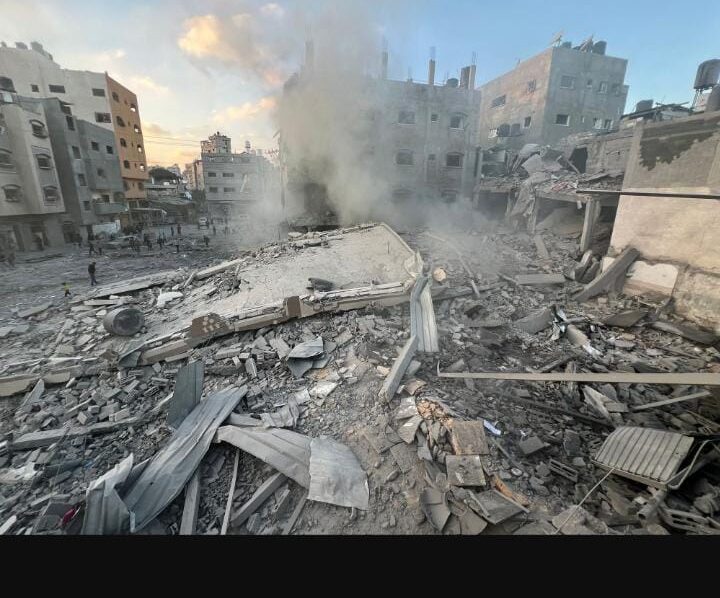
Bangladesh, a country prone to natural disasters, has once again found itself in the grips of a devastating flood. With millions stranded and countless lives disrupted, the nation is battling one of the worst floods in its history. This article delves into the causes, impact, and ongoing relief efforts in the wake of this catastrophic event.
The Cause: Unprecedented Monsoon Rains
Bangladesh experiences annual monsoon rains, which are vital for agriculture but often lead to flooding. This year, however, the monsoon rains have been far more intense and prolonged than usual.
A combination of factors, including climate change, deforestation, and inadequate water management, has exacerbated the situation, causing rivers to overflow and low-lying areas to become submerged.
Climate Change: A Growing Threat
Scientists have long warned that climate change would increase the frequency and severity of extreme weather events. In Bangladesh, rising global temperatures have led to more intense monsoon rains, while melting glaciers in the Himalayas contribute to higher river levels. The country’s geographical location and flat terrain make it particularly vulnerable to these changes, turning what would normally be manageable seasonal floods into devastating natural disasters.
Deforestation and Poor Infrastructure
Deforestation in the upstream regions of neighboring countries like India has significantly reduced the land’s ability to absorb water, leading to rapid runoff into Bangladeshi rivers. Additionally, Bangladesh’s infrastructure, including its network of dams and levees, is often inadequate to handle such large volumes of water. The combination of these factors has resulted in widespread flooding, particularly in rural and low-lying areas.
The Impact: Humanitarian Crisis Unfolds
The floods have caused widespread devastation across Bangladesh, leaving millions of people stranded without access to basic necessities such as food, clean water, and shelter. The impact on the population has been catastrophic, with entire villages submerged, homes destroyed, and livelihoods lost.
Displacement and Loss of Livelihoods
Over two million people have been displaced by the floods, with many forced to seek refuge in overcrowded and makeshift shelters. Agricultural lands, which are the primary source of income for a significant portion of the population, have been severely affected. Crops have been washed away, and livestock lost, leaving families without a means to support themselves. The economic impact of these losses will be felt for years to come.
Health and Sanitation Crisis
The flooding has also led to a severe health crisis, with contaminated water sources causing outbreaks of waterborne diseases such as cholera, dysentery, and diarrhea. The lack of clean drinking water and proper sanitation facilities has exacerbated the situation, particularly in remote areas where access to healthcare is limited. Relief efforts are underway, but the scale of the disaster has overwhelmed local resources, leading to fears of a worsening health emergency.
Government and International Response
In response to the crisis, the government of Bangladesh has mobilized its resources to provide emergency relief to the affected population. However, the scale of the disaster has made it clear that international assistance is urgently needed.
National Relief Efforts
The Bangladeshi government has deployed military personnel to assist with rescue operations, distribute food and medical supplies, and construct temporary shelters for the displaced. Despite these efforts, the sheer number of people affected has strained resources, and many areas remain inaccessible due to floodwaters.
International Aid and Cooperation
The international community has begun to respond to the crisis, with several countries and humanitarian organizations pledging aid. The United Nations and the Red Cross have launched appeals for emergency funding to support relief efforts, while neighboring countries have sent supplies and personnel to assist with rescue and recovery operations. However, the delivery of aid has been hampered by the ongoing floods and damaged infrastructure.
Long-Term Challenges and Solutions
As the immediate floodwaters begin to recede, Bangladesh faces significant long-term challenges in rebuilding and preventing future disasters. Addressing these issues will require both national and international cooperation, as well as a focus on sustainable development and climate resilience.
Rebuilding and Rehabilitation
The reconstruction of homes, schools, and infrastructure will be a monumental task, requiring substantial financial resources and time. The government will need to prioritize rebuilding efforts to ensure that displaced families can return to their communities and resume their lives. Additionally, there will be a need for long-term support to help farmers recover their livelihoods and replant lost crops.
Strengthening Disaster Preparedness
To mitigate the impact of future floods, Bangladesh must invest in stronger disaster preparedness and response mechanisms. This includes improving early warning systems, strengthening infrastructure such as dams and levees, and promoting reforestation and sustainable land management practices. International cooperation will be crucial in providing the technical expertise and financial support needed to implement these measures effectively.
Addressing Climate Change
Finally, the international community must recognize the role of climate change in exacerbating natural disasters and take decisive action to reduce global carbon emissions. For Bangladesh, this means not only advocating for stronger climate policies on the world stage but also implementing local measures to increase resilience to climate impacts. This includes investing in renewable energy, improving water management systems, and protecting vulnerable communities through adaptive measures.
Conclusion: A Call for Global Solidarity
The deadly floods in Bangladesh are a stark reminder of the devastating impact of climate change and the urgent need for global action. While the immediate priority is to provide relief to those affected, it is equally important to address the underlying causes of such disasters. As Bangladesh struggles to recover from this catastrophe, the world must stand in solidarity, offering both immediate aid and long-term support to build a more resilient and sustainable future.
Related Articles
Devastating Flash Floods Strike Afghanistan
Death Toll Rises to 41 in Indonesia’s Flood and Volcanic Mud Flows
Catastrophic Flooding Devastates Southern Brazil
What Really Caused the Dubai and Oman Floods: Climate Change or Cloud Seeding?
Deadly Storms Ravage Pakistan And Afghanistan
Subscribe to Follow Global Trends for daily global news.
Make Money Online Working Remotely
To Advertise, send a mail to advertise@followglobaltrends.com
Find Out How To Make Money As A Full Time Writer/Blogger
Written by: Enyoghasi Ngozi pricillia


